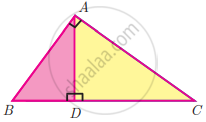Advertisements
Advertisements
प्रश्न
In the figure, PQR is a straight line and PS || RT. If QS = 12cm, QR = 15cm, QT = 10cm and RT = 6cm, find PQ and PS.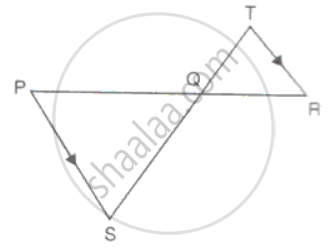
उत्तर
In ΔPQS and ΔQTR
∠PQS = ∠TQR ...(verticall opposite angles)
∠SPQ = ∠QRT ...(alternate angles)
Therefore, ΔPQS ∼ ΔQTR
⇒ `"PQ"/"QS" = "QR"/"QT"`
⇒ `"PQ"/(12)(15)/(10)`
⇒ PQ = `(15 xx 12)/(10)`
⇒PQ = 18cm
Also,
⇒ `"QS"/"PS" = "QT"/"RT"`
⇒ `(12)/"PS" = (10)/(6)`
⇒ PS = `(6 xx 12)/(10)`
⇒ PQ = 7.2cm.
APPEARS IN
संबंधित प्रश्न
The diagonal BD of a parallelogram ABCD intersects the segment AE at the point F, where E is any point on the side BC. Prove that DF × EF = FB × FA
In ΔABC, ∠ABC = ∠DAC, AB = 8 cm, AC = 4 cm and AD = 5 cm.
- Prove that ΔACD is similar to ΔBCA.
- Find BC and CD.
- Find area of ΔACD : area of ΔABC.
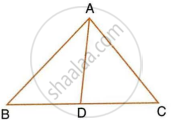
Two chords AB and CD of a circle intersect at a point P outside the circle.
Prove that: (i) Δ PAC ~ Δ PDB (ii) PA. PB = PC.PD

Δ ABC ~ Δ DEF. If BC = 3cm , EF=4cm and area of Δ ABC = 54 cm2 , find area of Δ DEF.
In the given figure, PQ || AB; CQ = 4.8 cm QB = 3.6 cm and AB = 6.3 cm. Find : PQ

A line segment DE is drawn parallel to base BC of ΔABC which cuts AB at point D and AC at point E. If AB = 5BD and EC = 3.2 cm, find the length of AE.
In ΔPQR, L and M are two points on the base QR, such that ∠LPQ = ∠QRP and ∠RPM = ∠RQP.
Prove that : (i) ΔPQL ∼ ΔRPM
(ii) QL. Rm = PL. PM
(iii) PQ2 = QR. QL.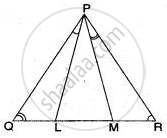
The scale of a map is 1 : 50000. The area of a city is 40 sq km which is to be represented on the map. Find: The area of land represented on the map.
Check whether the triangles are similar and find the value of x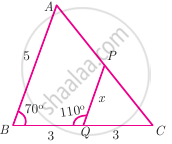
In the adjacent figure ∠BAC = 90° and AD ⊥ BC then
